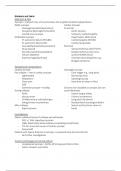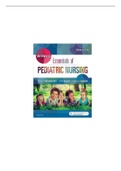College aantekeningen
Chapter 7 : Acetylcholine
- Vak
- Instelling
- Boek
Chapter 7 on acetylcholine provides a comprehensive overview of the role and mechanisms of this essential neurotransmitter. It discusses the synthesis of acetylcholine (ACh) by the enzyme choline acetyltransferase from choline and acetyl coenzyme A and how its production is influenced by precursor ...
[Meer zien]








